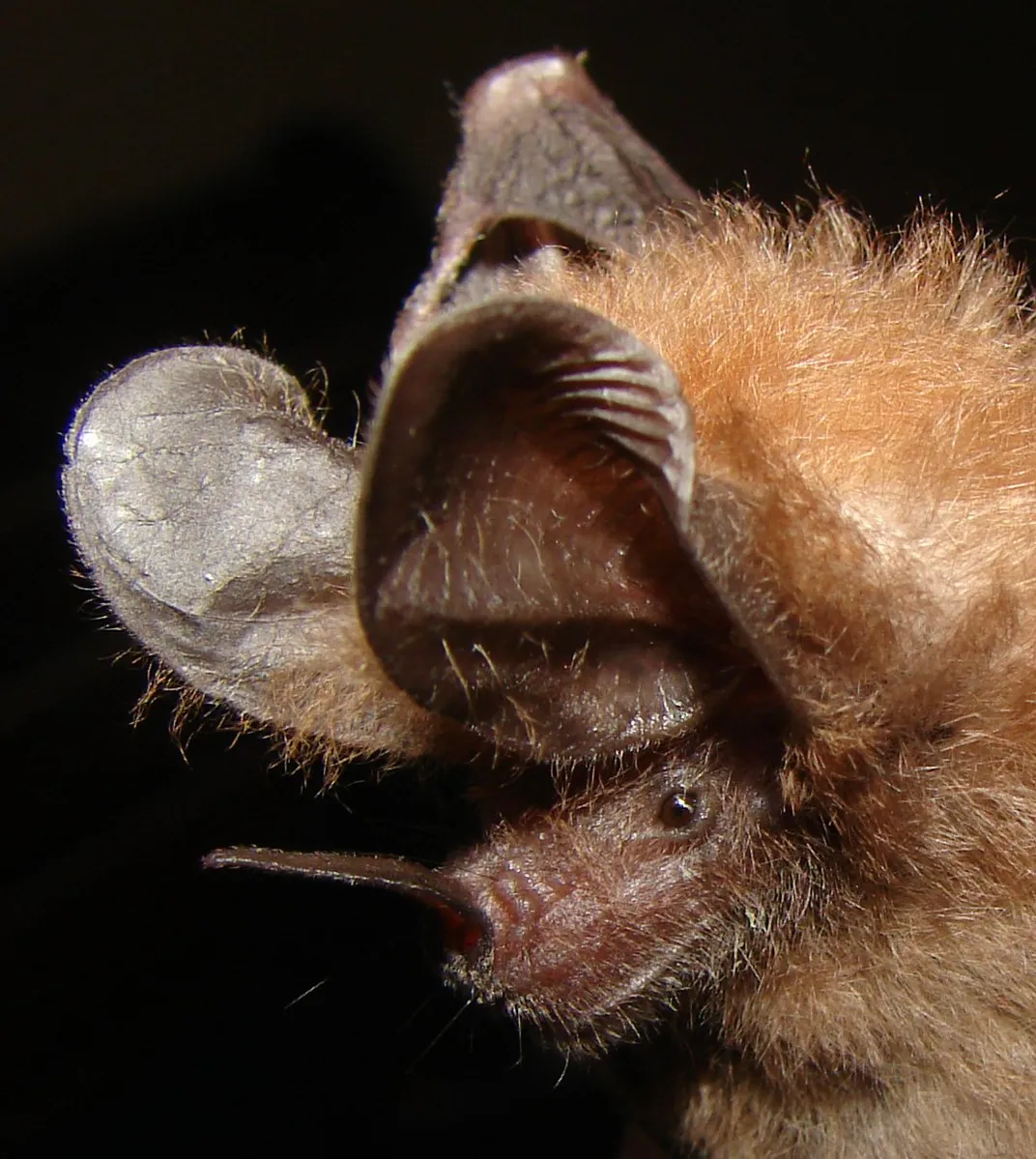Bats Use Leaves as Mirrors to Locate and Catch Their Prey
The latest discovery in the arms race between bats and insects reveals that even silent, motionless dragonflies aren’t safe
:focal(552x911:553x912)/https://tf-cmsv2-smithsonianmag-media.s3.amazonaws.com/filer/a9/0a/a90a4fd2-7bd0-42d2-a0fe-7169c2b14b8e/mmicrotis_flightcage_inga_geipel.png)
For much of 2009 and 2010, Inga Geipel huddled over a series of computer monitors in a four- by four-meter chicken-wire cage along the rainforest of Barro Colorado Island. Across the way, Geipel, a scientist at the Smithsonian Tropical Research Institute (STRI) in Panama, had rigged an enclosure which she’d designed to mimic the surrounding environment. A bat, some artificial leaves, a suspended dragonfly and a camera were inside this tropical pen.
Late into the night, a bleary-eyed Geipel watched to see if the common big-eared bat could use its echolocation capabilities to catch the dragonfly, even though the insect wasn’t moving or making any noise. Striking the insect would only take two or three seconds, so she was afraid to even blink.
“The funny part is that these bats are fairly small”—they weigh around 6 grams—“and the prey items they sometimes eat are as large as them,” Geipel says. “If they eat one of these prey items, they basically fall asleep. Imagine you eat a steak that’s nearly your size, and then you just fall into this food coma. So most of the time I spent watching the sleeping bat and trying not to fall asleep myself.”
/https://tf-cmsv2-smithsonianmag-media.s3.amazonaws.com/filer/48/64/48647231-8ba7-4a6b-97aa-bb2dff8f6231/portraitaufnahme_inga.jpg)
All the late nights paid off. In a study published today in the journal Current Biology, Geipel and a team of biologists documented how these bats use a clever and previously unknown hunting technique to catch difficult-to-spot prey: They angle sound waves off of leafs to home in on their prey, treating leaves as “acoustic mirrors.”
Most bats target their prey through echolocation, projecting sound waves and sensing the signals that bounce off what’s in front of them. While echolocation is a common feature among ocean animals like whales and dolphins, besides a few bird species, bats are one of the only land animals to use the technique.
Typically, echolocation can’t detect a motionless dragonfly perched on a leaf. The sound waves bouncing off the leaf would drown out any signal coming from the insect itself.
“For decades it was thought to be a sensory impossibility for bats to use echolocation to find silent, motionless prey in the clutter of the rainforest understory,” says Rachel Page, a Smithsonian animal behavior researcher at STRI who was not involved in the study, in an email. “Here, Geipel and her team elegantly show how this ‘impossibility’ actually takes place.”
But early on, Geipel realized she had stumbled upon something new. “This bat found the strategy by approaching leaves from oblique angles,” she says. “That enables them to detect the prey.”
Geipel and colleagues' study challenges the assumption that silence can be an effective self-preservation tool for bat prey. “The study reveals a new step in the evolutionary arms race between the sensory systems of predators and their prey,” Page says

To understand this evolutionary battle, consider the multi-millennia skirmish between bats and moths. Bats love moths: They’re large, nutritious sources of food for an animal that can eat virtually its own body weight in insects each night. Yet because they are such coveted prey among bat species, moths have developed a host of strategies to combat echolocation. Some moth species, for instance, have scales that actually “jam” bat sonar in order to avoid detection. Others have developed ears that can detect echolocation ultrasounds, so the insects can flee before they fall prey to an approaching bat.
Bats have not taken these evolutionary counter-measures lightly. In response, some bat species like the Barbastelle bat began using alternate ultrasound signals, or “stealth echolocation,” that moths cannot detect.
The use of leaves as acoustic mirrors is the latest frontier in the struggle between bats, and their prey. Although Geipel did not use moths in her experiment, she believes that future scientists will uncover the same leaf-mirror techniques in a number of other bat species, including the vespertilionid family of microbats that are especially adept at hunting moths.
/https://tf-cmsv2-smithsonianmag-media.s3.amazonaws.com/filer/fc/dd/fcdd1ad1-1c01-475f-af9e-849cf5d282f2/flightcage_setup_mm2.jpg)
“Most bats are open foragers, so they catch insects that fly somewhere in the open,” says Dieter Vanderelst, a researcher at the University of Cincinnati and coauthor of the study. Open-air hunting keeps echolocation sonars from clashing with the surrounding environment.
Yet the fact that the common big-eared bat has devised a way around this problem suggests to Vanderelst that more surprises might lie ahead in the bat's technological battle for supremacy over its prey. “Maybe there are other ways in which bats deal with the limitations of sonar,” he says. “We might end up finding other behaviors in bats that deal with these shortcomings.”
Studying echolocation also has implications beyond just bats: Vanderelst believes that humans should take note of bat strategies as we fine-tune our own sonar equipment.
“We can learn from how bats use sonar, for example, for robotics applications or drone applications or even radar applications,” he says. The world’s only flying mammals still have a lot to teach us humans.